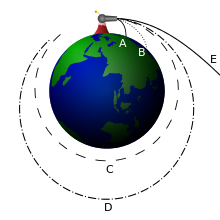Posted: Sep 26, 2011 3:28 am
"Most material ejected from the crater is deposited within a few crater radii, but a small fraction may travel large distances at high velocity, and in large impacts it may exceed escape velocity and leave the impacted planet or moon entirely." http://en.wikipedia.org/wiki/Impact_crater
"Low Earth Orbit...LEO is between 160–2,000 km (100–1,240 miles) above the Earth's surface"

"The Chicxulub crater... is more than 180 km (110 mi) in diameter" http://en.wikipedia.org/wiki/Chicxulub_crater
So most of the Chicxulub ejecta was deposited within 165 miles of the impact site.
That allows for a significant amount to expand into Noctilucent cloud cover.
Also note that these gases will not fall back down like the solid materials will.
These gases will take a slower way down through the action of precipitation from the atmosphere.
It seems to me this is enough to show that this impact put a lot of UV blocking cloud cover (the water canopy) above the earth for some presently undetermined time period. But I do know that they come down very slowly.
We can also get into the mass of the impactor, the quantity of ejecta, the proportion of water to minerals, etc....
But for me, the diameter of the crater is enough to show that it was a significant amount.
---------------
"To analyze the motion of a body moving under the influence of a force which is always directed towards a fixed point" http://en.wikipedia.org/wiki/Planetary_ ... tal_motion
"Low Earth Orbit...LEO is between 160–2,000 km (100–1,240 miles) above the Earth's surface"

"The Chicxulub crater... is more than 180 km (110 mi) in diameter" http://en.wikipedia.org/wiki/Chicxulub_crater
So most of the Chicxulub ejecta was deposited within 165 miles of the impact site.
That allows for a significant amount to expand into Noctilucent cloud cover.
Also note that these gases will not fall back down like the solid materials will.
These gases will take a slower way down through the action of precipitation from the atmosphere.
It seems to me this is enough to show that this impact put a lot of UV blocking cloud cover (the water canopy) above the earth for some presently undetermined time period. But I do know that they come down very slowly.
We can also get into the mass of the impactor, the quantity of ejecta, the proportion of water to minerals, etc....
But for me, the diameter of the crater is enough to show that it was a significant amount.
---------------
"To analyze the motion of a body moving under the influence of a force which is always directed towards a fixed point" http://en.wikipedia.org/wiki/Planetary_ ... tal_motion